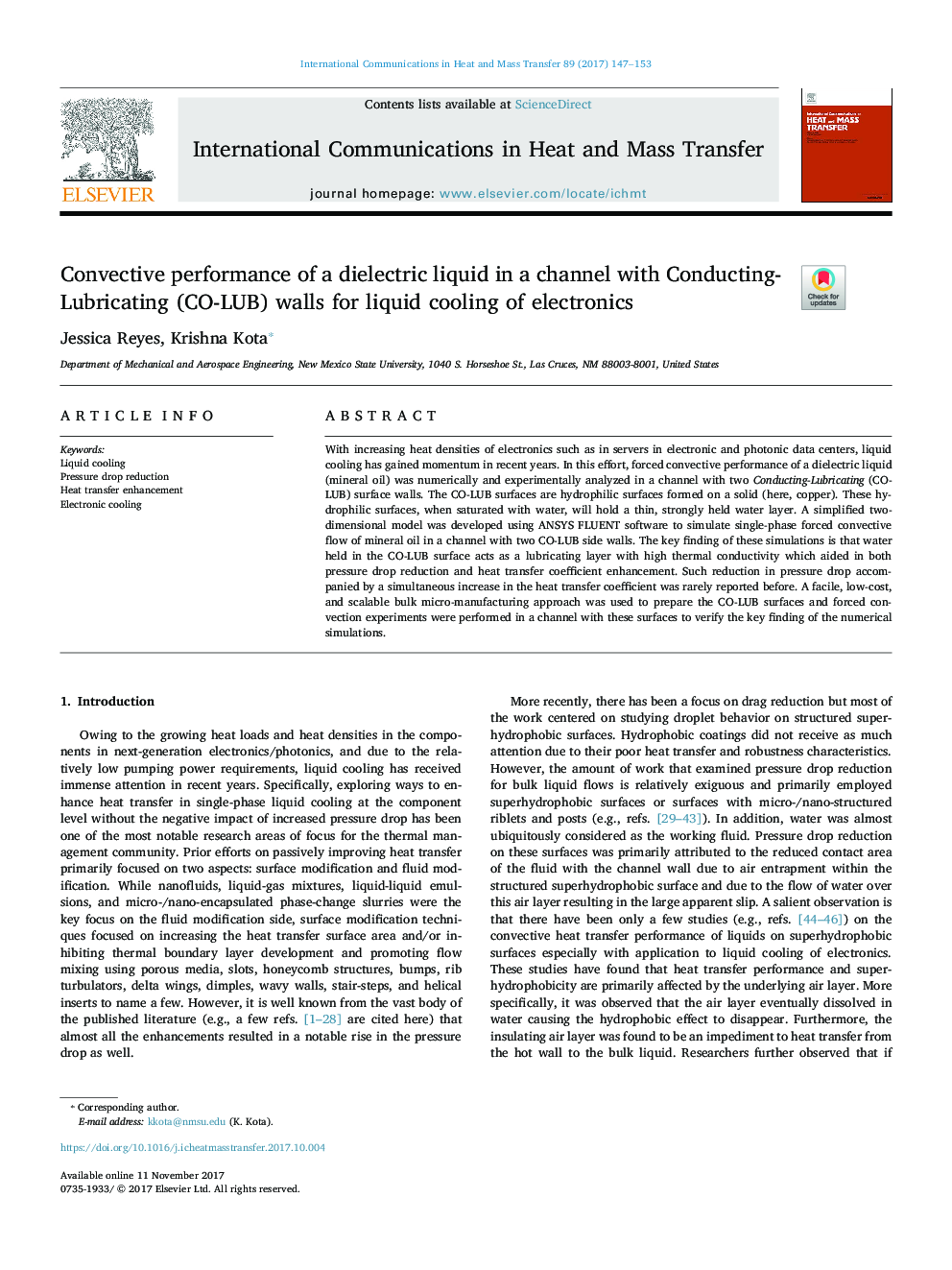| Article ID | Journal | Published Year | Pages | File Type |
|---|---|---|---|---|
| 7053172 | International Communications in Heat and Mass Transfer | 2017 | 7 Pages |
Abstract
With increasing heat densities of electronics such as in servers in electronic and photonic data centers, liquid cooling has gained momentum in recent years. In this effort, forced convective performance of a dielectric liquid (mineral oil) was numerically and experimentally analyzed in a channel with two Conducting-Lubricating (CO-LUB) surface walls. The CO-LUB surfaces are hydrophilic surfaces formed on a solid (here, copper). These hydrophilic surfaces, when saturated with water, will hold a thin, strongly held water layer. A simplified two-dimensional model was developed using ANSYS FLUENT software to simulate single-phase forced convective flow of mineral oil in a channel with two CO-LUB side walls. The key finding of these simulations is that water held in the CO-LUB surface acts as a lubricating layer with high thermal conductivity which aided in both pressure drop reduction and heat transfer coefficient enhancement. Such reduction in pressure drop accompanied by a simultaneous increase in the heat transfer coefficient was rarely reported before. A facile, low-cost, and scalable bulk micro-manufacturing approach was used to prepare the CO-LUB surfaces and forced convection experiments were performed in a channel with these surfaces to verify the key finding of the numerical simulations.
Related Topics
Physical Sciences and Engineering
Chemical Engineering
Fluid Flow and Transfer Processes
Authors
Jessica Reyes, Krishna Kota,
